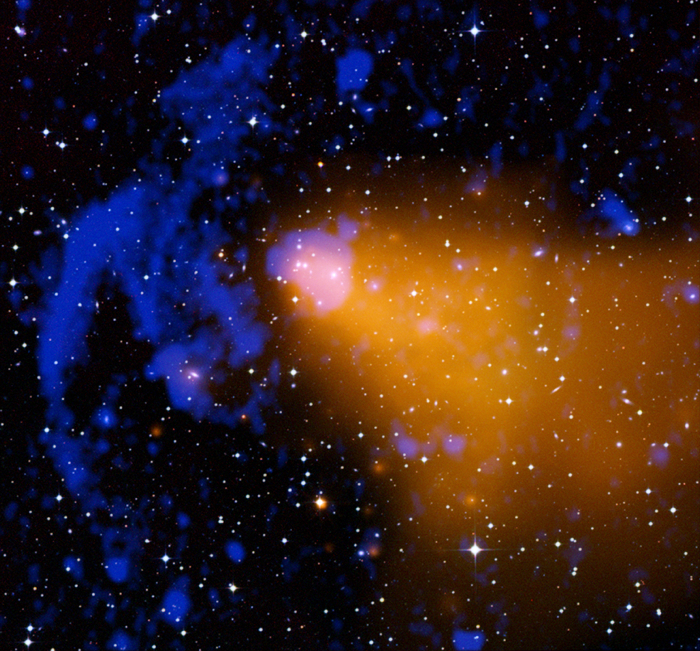
 Credit: X-ray (NASA/CXC/SAO/A. Vikhlinin; ROSAT), Optical (DSS), Radio (NSF/NRAO/VLA/IUCAA/J.Bagchi)
Credit: X-ray (NASA/CXC/SAO/A. Vikhlinin; ROSAT), Optical (DSS), Radio (NSF/NRAO/VLA/IUCAA/J.Bagchi)
Passing the Cosmic Test
Einstein's theory of General Relativity describes gravity as an effect of the curvature of space-time produced by the mass and energy content of the Universe. It's been a wildly successful theory. It predicted the expansion of the Universe (though Einstein himself did not believe this prediction at the time) and also allowed for the acceleration of the expansion of the Universe as well, a form of anti-gravity. Evidence of this acceleration has been compiled by astronomers over the past two decades, produced by the so-called "Dark Energy". The presence of Dark Energy in the Universe has dramatic implications. For example, at some time in the distant future, if the acceleration does not stop, external galaxies will be so far from us that they will disappear from view, producing a "lonely Universe". But it may be that GR is not the full story, and that gravity works differently on the very largest scales than it does on the more familiar scales of laboratory and solar system. To test this idea, astronomers have used detailed studies of the largest known structures, clusters of galaxies. The image above shows one such cluster, Abell 3376, in X-rays (orange, from the Chandra X-ray Observatory and ROSAT), radio (blue, from the VLA) and in visible light (white). Such studies have suggested that Einstein was right (once again), and that gravity obeys General Relativity on scales of at least 130 million light years. This improves on previous such tests of GR by a factor of 100.
Published: May 10, 2010
<
HEA Dictionary ● Archive
● Search HEAPOW
● Other Languages
● HEAPOW on Facebook
● Download all Images
● Education ● HEAD
>

Each week the HEASARC
brings you new, exciting and beautiful images from X-ray and Gamma ray
astronomy. Check back each week and be sure to check out the HEAPOW archive!
Page Author: Dr. Michael F. Corcoran
Last modified Monday, 26-Feb-2024 17:34:17 EST


